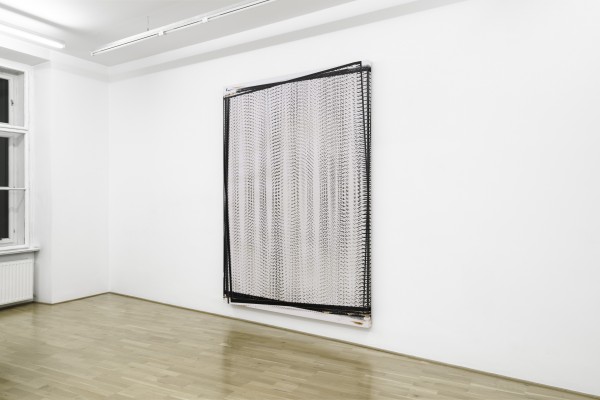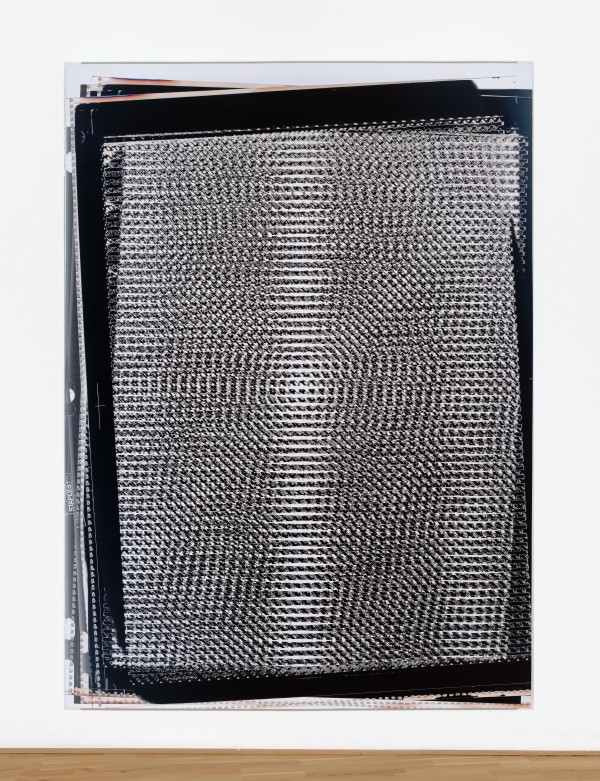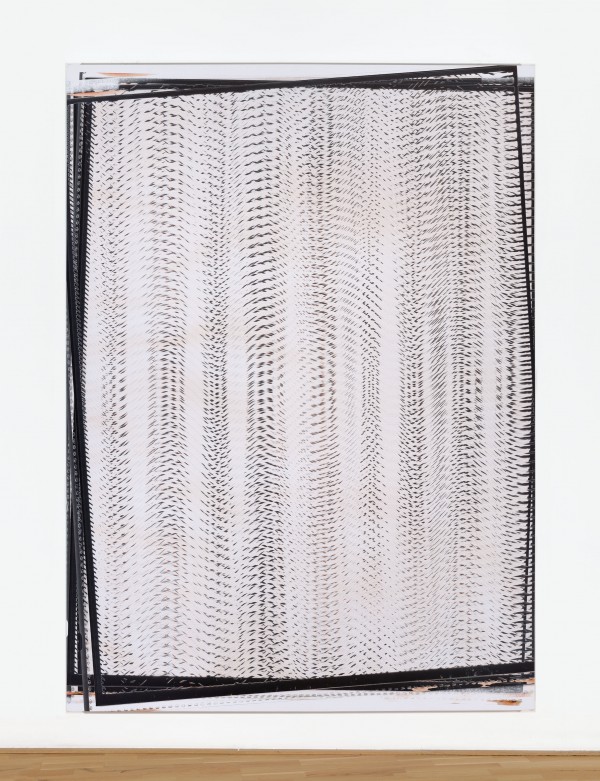Travess Smalley
Saturday, 26 July 2014
Work from Vector Weaves.
“Vector Weave is a series of large-scale vinyl prints showing thick textures and patterns, interwoven layers, meshes of structures that are difficult to parse. The title refers on the one hand to the vector graphics that are the basis of the works, and on the other hand to the process that runs through what initially look like simple horizontal lines. Smalley prints the digital patterns on different papers, including transparencies, lays them on top of one another and then scans them again. He calls the transfer from digital to analog and back into digital “Feedback Loops.” He says of his working method: “When I made it digital, it opened up a whole other plane of options: opening the image in Photoshop, selectively changing colors, cutting out areas, rearranging areas. Very quickly I began to notice the similarities of the digital and physical side of my art making practice.” Photoshop serves as a means of further manipulating the images. At the same time he saves all his working steps. For a year now he has been recording every new sequence. He takes his personal archive of image production and applies this growing resources over and again to other drawings. Despite the possibility of identical reproducibility, each image remains a unique piece. The last step is to enlarge the image to UV prints on vinyl – a technique used for printing large-scale billboards – and to span the material over aluminum frames. These frames give the images body and show how the material is stretched. The print extends beyond the rims, and the motif is reflected there, on the narrow side. The decision to print not only the front surface opens up new levels of meaning, for instance a relation to textile design, or a reference to the three-dimensional structure behind the print and a dialog with the history of painting.
Travess Smalley’s working method is both virtual and physical. He works in various media spaces, breaking out of preconceived boxes like “painting,” “photography,” and “prints” as well as the categories “digital” and “analog.” What amounts to painting or printing and what techniques and forms of appearance these terms might encompass has been debated and extended for over 15 years now in the context of digital technologies, constantly developing software and its usage in the visual arts. Travess Smalley, who was born in 1986, is right at the center of this discussion of contemporary redefinitions of artistic media. “Digitally, I work in the fields of photography, video, computer graphics, digital printing and animation, while physically I work in the fields of sculpture and painting using various tools and techniques. My digital studio practice is the Yin, the physical studio practice the Yang. Basically, the tools are everywhere and I am the conduit. I find that my work is freshest when I am moving between fields and mediums on a regular basis. My objects inform my Photoshop files and vice versa.”” – GGalerie Andreas Huber



